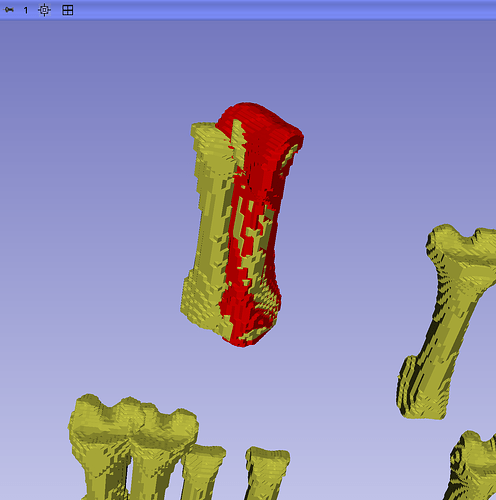Operating system: IOS
Slicer version: 5.6.2
Hello Community!
I am new to slicer and ALPACA and I would like to apply a Multi-template (MALPACA) to my data for GMM analysis.
Some context: I am working with 4 modern species and archaeological specimens. My objective is to create a template with modern specimens to test the phenotypic/taxonomic potential of the bone that I use and also to compare these modern specimens to archaeological ones. I decided to choose this automatic approach because of the good repeatability, avoid operator effect, open source AND especially because it is very complicated to find homologous landmarks on the bone that I use…!
My issue:
Firstly, I was trying to test MALPACA on my 4 modern species and I have some troubles applying multi-template.
Explanations: I was trying to generate a “ kmeans_selected_templates” on a sample composed of all my specimens of the 4 species mixed together. The idea is to obtain the better representative template of these 4 species, to apply MALPACA on all these modern specimens, to observe the potential of a phenotype/taxonomical signal on modern specimens. The next objective is to apply and test these same (modern) templates on my archaeological specimens. The goal is to see how the both diversities (modern and archaeological) are interacting in statistical analysis.
BUT, I am stuck at the first step with the determination of the Kmeans samples… as I said before, I am not able to create a “ kmeans_selected_templates” when I am mixing all my modern specimens of the 4 species. The step 1 of “generetate reference Point cloud” never really works and I never had acces to the step 4 of “ Multi templates selection” etc…
SO, I made a test on 1 species only and it seems that in this case it works because step 1 and 2 works and I was able to obtain the “Generate Point clouds matched to reference”. So, I deduced that my 4 species are maybe too different to generate a multi template together?
Consequently, I was thinking to generate a “kmeans_selected_templates” from each (4) species separately, and, after, groups all these templates together in a same file (one for landmarks points and one for ply models) in order to use them in the MALPACA batch processing “Method” and “Source landmarks” files. Like this, I will be able to obtain more “representative templates” for my modern and archaeological data.
Nevertheless, I am not sure if this procedure is not “too much” and maybe artificial? Before to test, I would like to know,
- if someone already proceeds like this?
- or have advice from colleagues who are more familiar with these tools. And/or, maybe suggest other procedures…
I really thank you in advance for your help!





